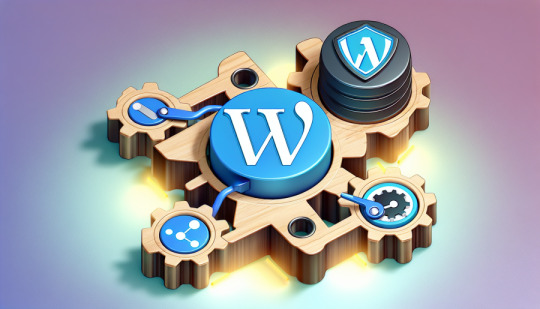#GraphQL APIs
Text
Google Cloud SQL’s Linear Optimization Vector Search Magic

On Google Cloud SQL, linear optimizes data and scalability with vector search capability
The goal of Linear is to enable product teams to deliver excellent software. In order to assist customers in streamlining processes throughout the product development process, They have dedicated the previous several years to developing an extensive project and problem tracking system. Although began as an issue tracker, have developed software into a potent project management tool for users worldwide and cross-functional teams.
For example, Linear Asks streamlines cooperation for users of her platform who don’t have Linear accounts by enabling businesses to handle request processes like bug and feature requests over Slack. Furthermore,Have included a feature called Similar Issues, which keeps duplicate or overlapping tickets at bay and guarantees more accurate and clearer data representation for expanding businesses.
Workflow and product management tools are becoming more and more necessary as clients’ companies expand and they have more users on the platform and problems to monitor. Her goal is to facilitate this expansion while maintaining her high standards for performance, stability, quality, and features that enable intricate technical setups and excellent user experiences.
Looking for a vector search database that is scalable
Google had a PostgreSQL database with the pgvector extension hosted on a PaaS during early development period, however it wasn’t indexed or used for production workloads.They had to update databases to handle production workloads and find a solution that supported vector search, since this is the most effective approach to categorize and detect related problems based on common traits or patterns. They can easily detect related or duplicate concerns by identifying commonalities across the vector representations of the issues. By streamlining bug tracking and assisting customers in resolving problems more successfully, this feature improves processes overall and saves time and resources.
Google Cloud SQL’s Vector Search
Google looked into and ultimately tried a number of the recently launched database products that are specifically designed to store vectors. However, in addition to the comparatively expensive cost for a function that wasn’t essential to the offering, google also encountered issues with indexing speed and excessive downtime while growing. They decided on Google Cloud SQL for PostgreSQL once pgvector support was enabled, considering Linear’s current data volume and objectives for finding an affordable solution. Its dependability and scalability pleased us. The learning curve for team was nonexistent since this decision was also in line with how to now use databases, models, ORMs, etc.
The magnitude and number of vectors had to deal with for the production dataset initially made migration procedure from development to production difficult. But were able to correctly index each division after divided the problems table into 300 chunks. The migration went well and used the typical procedure of building a follower from the current PostgreSQL database.
Linear uses Google Cloud to enable its real-time sync
Today, Google Cloud SQL for PostgreSQL powers main working database.Similarity-search features’ vectors might be stored in a separate database as Google Cloud SQL for PostgreSQL comes with the pgvector extension. This is accomplished by employing OpenAI ada embeddings to encode the semantic meaning of problems into a vector, which is then combined with additional filters to assist in the identification of related and pertinent things.
Linear’s online and desktop clients synchronize with backend in real-time, according to architectural design. they run synchronized WebSocket servers, public and private GraphQL APIs, and background job task runners on Google Cloud.
All of them operate as independently scalable Kubernetes workloads. They are confident in choice of Google Cloud SQL for PostgreSQL as major database option, and whole technological stack is built using NodeJS and Typescript. Google’s managed Memorystore for Redis as a cache and event bus.
Cloud SQL for PostgreSQL allows for future innovation and seamless scalability
For Linear,Google Cloud SQL for PostgreSQL has been quite helpful.they must depend on managed services since lack a dedicated operations staff. It’s great for operations and frees up engineering time to focus on creating user-facing features since it lets us extend database seamlessly into tens of terabytes of data without needing significant technical work.
In addition, They have received positive comments from clients, particularly with respect to Linear’s capability to recognize duplicate problems when they file a bug report. The program now makes suggestions for possible duplication when a user opens a new problem. Furthermore, Linear shows potential relevant defects that have previously been noted while managing client tickets using customer support application connections like Zendesk.
In the future, want to include machine learning (ML) into Linear to improve the user experience, automate processes, and provide smart recommendations within the product. Additionally, dedicated to improving similarity search features and going beyond vector similarity to include other signals in computations. have no doubt that Google Cloud will play a crucial role in assisting us in realizing this goal.
Read more on Govindhtech.com
0 notes
Text
We all know they both have different strengths and ideal use cases, but which do you generally prefer to use in your own projects, REST or GraphQL?
11 notes
·
View notes
Text
Node.js and GraphQL: An Introduction
Node.js and GraphQL: An Introduction to Building APIs
Introduction
GraphQL is a query language for APIs developed by Facebook in 2012 and released as an open-source project in 2015. It provides a more efficient, powerful, and flexible alternative to REST. With GraphQL, clients can request exactly the data they need, making it easier to evolve APIs over time. Node.js, with its asynchronous nature and powerful libraries, is an excellent choice for…
#API development#Apollo Server#GraphQL API#GraphQL tutorial#Node.js GraphQL#Node.js tutorial#web development
0 notes
Text
Understanding the Basics of APIs
Application Programming Interfaces (APIs)
crucial components in modern software development. They allow different software systems to communicate with each other and facilitate the integration of various services and functionalities. This article explores the basics of APIs, their types, and their importance in today’s tech landscape.

What is an API? for more........
An API (Application Programming Interface) is a set of rules and protocols that allows one piece of software to interact with another. It defines the methods and data formats that applications can use to request and exchange information. APIs enable different software systems to communicate, share data, and perform operations without needing to understand each other's underlying code.
Key Concepts:
Endpoint: A specific URL where an API service can be accessed. Endpoints represent different functionalities or resources offered by the API.
Request: The action taken by a client to interact with an API, such as retrieving data or sending information. Requests typically include a method (GET, POST, PUT, DELETE), headers, and sometimes a body.
Response: The data or acknowledgment returned by the API after processing a request. Responses usually include status codes, headers, and a body containing the requested information or result.
Authentication: A process used to verify the identity of a user or application accessing the API. Common methods include API keys, OAuth tokens, and Basic Auth.
Types of APIs
Web APIs: Also known as HTTP APIs or REST APIs, these are accessed over the web using HTTP/HTTPS protocols. They are widely used for web services and allow different systems to communicate via the internet.
RESTful APIs: Representational State Transfer (REST) APIs use standard HTTP methods and are designed to be stateless. They operate on resources identified by URLs and support various formats like JSON and XML.
SOAP APIs: Simple Object Access Protocol (SOAP) APIs use XML-based messaging protocols for exchanging information. SOAP APIs are known for their robustness and are often used in enterprise environments.
GraphQL APIs: A query language for APIs that allows clients to request specific data. GraphQL APIs provide a more flexible and efficient way to interact with data compared to REST APIs.
Library APIs: These APIs are part of software libraries or frameworks that provide predefined methods and functionalities for developers to use in their applications.

Click now
For those interested in deepening their understanding of APIs, including practical applications and advanced concepts, Getege offers a comprehensive course. This course provides detailed insights into API design, implementation, and best practices, helping you master the fundamentals and more complex aspects of API development.
#APIs#Application Programming Interfaces#REST API#SOAP API#GraphQL API#Web APIs#API Basics#API Integration
0 notes
Text
#PentestGround, free pentesting labs
Preparing a lab for practicing hashtag#pentest can take time. Depending of the vulnerable and attacker machines, you may need to download a vulnerable #virtualMachine, install it, fix eventual issues on #VirtualBox or #VMware, start services, maybe prepare the #database, #tools, #proxy, #certificates, etc… Pentest-Tools.com provides ready to use free pentesting labs, including #webApps,#Redis, #RestAPI and #GraphQL.
Enjoy!
1 note
·
View note
Text
Developer Environment Presentation 1 Part 8: Jannah Ionic Web Application Preview
Preview of the Jannah Ionic Web Application. Showcase making queries (WorkflowList, BootList, NetworkList, StorageList, ComputeList, UXList, FeedbackList, UserList, SiteList) and their response data structure.
Developer Environment Presentation 1 Part 8: Jannah Ionic Web Application Preview
In the previous video, we had left off showcasing the Django based middleware application.
I had entered sample data for the various Jannah application (business logic) models.
Sites sample data
Users sample data
Boots sample data
Storage sample data
Computes sample data
UX sample data
Feedback sample…
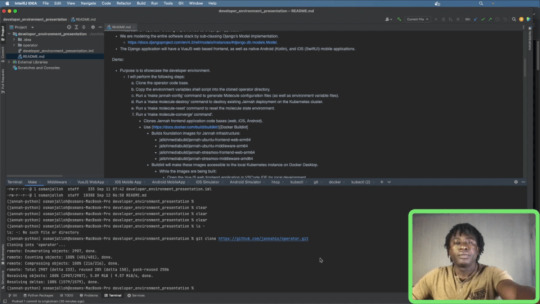
View On WordPress
#android#API#Apollo#application#Boots#Computes#Developer#django#Environment#Feedback#GraphQL#Ionic#middleware#mobile#model#Query#Sites#software#storage#swiftui#Users#ux#web#Workflows
0 notes
Text
Working with APIs in C# and React: Best Practices
Dive into our latest guide on mastering APIs with C# and React TypeScript, packed with real-world tips and robust code examples for the modern developer. 🚀#SoftwareDevelopment #CSharp #ReactTypeScript #WebDev #APIs #BestPractices
Resources:
Some great books for learning great techniques in React and C#, when building applications that talk to your API.
Introduction to API Consumption and Building in Modern Applications
Context: An overview of why APIs are crucial for modern web and mobile applications. Explanation of RESTful APIs and GraphQL.
REST vs. GraphQL:
REST (Representational State Transfer) APIs operate over…
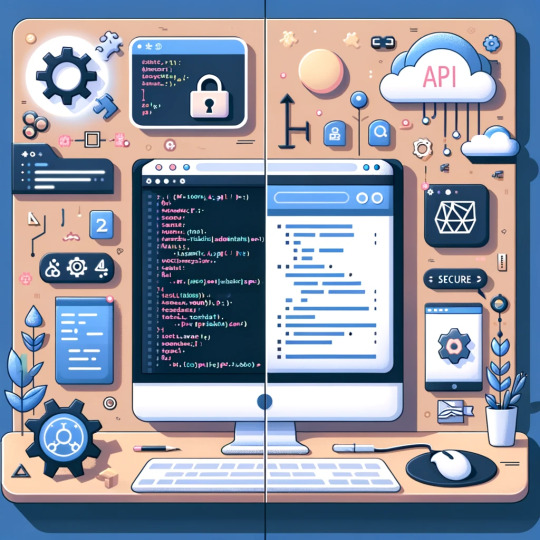
View On WordPress
0 notes
Text
Generate GraphQL Query In Salesforce Apex
GraphQL can retrieve data from multiple sources in a single query. This will reduce the number of HTTP requests, reducing latency and boosting performance, particularly in mobile and low-bandwidth devices. To retrieve data we have to create SQOL in GraphQL format. In this post, we will build a GraphQL Query Generator in Salesforce Apex that will give us a valid GraphQL query. We will also use generated SOQL to retrieve data using GraphQL API.
To explore GraphQL in Salesforce you can check our other post Exploring GraphQL API in Salesforce.
Steps to create a GraphQL query generator
Create Apex Classes for Query Generator
Use Generate GraphQL Query to retrieve data
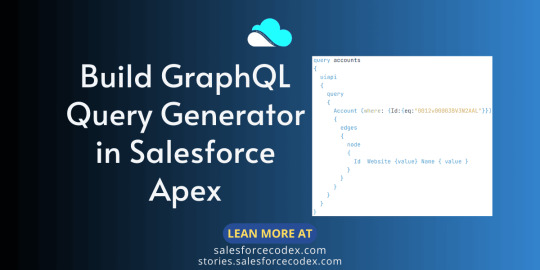
Check out post GraphQL Query Generator in Salesforce Apex to learn each step in detail.
#salesforce#salesforce development services#salesforce development company#development#salesforcecodex#rest api#graphql
0 notes
Video
youtube
(via Spring Boot GraphQL Mongo DB Project Tutorial with Example for API Developers) Full Video Link https://youtu.be/JElcKeh9a5A Hello friends, new #video on #springboot #graphql #mongodb #api #microservices #application #tutorial for #developer #programmers with #examples are published on #codeonedigest #youtube channel. @java #java #aws #awscloud @awscloud @AWSCloudIndia #salesforce #Cloud #CloudComputing @YouTube #youtube #azure #msazure #codeonedigest @codeonedigest #graphqlspringboot #graphqlspringboottutorial #graphqlspringbootmicroservicesexample #graphqlspringbootexample #graphqlmongodbexample #graphqlmongodbspringboot #springbootmongodb #springbootgraphql #springbootgraphqltutorial #springbootgraphqlexample #springbootgraphqlresolver #springbootgraphqlschema #springbootgraphqlschemamapping #springbootgraphqlmongodb #mongodbtutorialforbeginners #springboottutorial #springbootproject #graphql
#video#springboot#graphql#mongodb#api#microservices#application#tutorial#developer#programmers#examples#codeonedigest#you…
0 notes
Text
Rest API Paging Strategy
There is a lot written about paging strategies for REST API’s. This is my simple and quick take on the subject and what I generally implement when rolling my own APIs.
Any API that returns a collection should have some form of return result limiting. This is to avoid killing your web servers, database servers, networks and avoiding a super easy distributed denial of service (DDoS) attack.
I…
View On WordPress
0 notes
Text
REST API vs GraphQL API: Choosing an API Which You Need
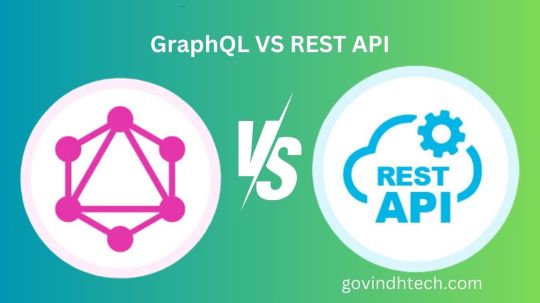
REST API vs. GraphQL APIs: A Developer Showdown
APIs power modern online services by connecting software components and transferring data across the internet. API technologies like SOAP, REST, and GraphQL facilitate software development by integrating third-party data and services. APIs allow firms to securely communicate data and provide services to workers, business partners, and users.
Recent disputes have focused on REST (representational state transfer) and GraphQL, despite the various APIs. Both have several advantages and are used in networking projects worldwide. Data traffic management differs greatly between them. IBM compare REST and GraphQL APIs and explain how corporations may optimise their networks.
Explain REST and GraphQL APIs
Comparing REST and GraphQL APIs requires knowledge of each.
REST
The early 2000s-developed REST architecture paradigm for networked hypermedia applications uses a stateless, client/server, cacheable communication protocol. RESTful APIs drive REST designs.
REST APIs address resources using URIs. REST APIs use endpoints to execute CRUD (“create,” “read,” “update,” and “delete”) network resource activities. They shape and size client resources based on a media type or MIME type. Most formats are JSON and XML (occasionally HTML or plain text).
The server handles client requests for resources and returns all related data. HTTP response codes include “200 OK” for successful REST queries and “404 Not Found” for missing resources.
GraphQL
In 2012, Facebook created GraphQL, a query language and API runtime that became open source in 2015.
API schema published in GraphQL schema definition language defines GraphQL. Each schema lists data types and associations the user may query or alter. The resolver backs each schema field. The resolver converts GraphQL queries, modifications, and subscriptions into data and fetches it from databases, cloud services, and other sources. Resolvers specify data formats and let the system combine data from several sources.
Instead of utilising several endpoints to acquire data and conduct network operations like REST, GraphQL exposes data models by using a single endpoint for all GraphQL queries. Using resource attributes and resource references, the API gets the client all the data they need from a single query to the GraphQL server.
GraphQL and REST APIs are resource-based data exchanges that employ HTTP methods like PUT and GET to limit client actions. However, important contrasts explain why GraphQL has grown and why RESTful systems have endured.
REST API vs GraphQL API
GraphQL APIs are typically considered an enhancement over RESTful settings due to their ability to promote front-end-back-end team cooperation. An organization’s API journey should continue with GraphQL, which solves REST difficulties.
REST was the norm for API designs, and many developers and architects still use RESTful settings to manage IT networks. Understanding the differences is crucial to any IT management plan.
REST and GraphQL APIs handle differently:
Data retrieval
REST uses many endpoints and stateless interactions to handle each API request as a new query, so clients obtain all resource data. Over-fetching occurs when a client only wants a portion of the data. To make up for under-fetching, a RESTful system frequently requires clients query each resource individually if they need data from numerous resources. Single-endpoint GraphQL APIs eliminate over- and under-fetching by providing clients with an accurate, full data response in one round trip from a single request.
Versioning
Teams must version APIs to adjust data structures and avoid end-user errors and service outages in a REST architecture. Developers must establish a new endpoint for every update, producing several API versions and complicating maintenance. GraphQL eliminates versioning since clients may express data needs via queries. Clients without need for new server fields are unaffected. Clients may request deprecated fields until queries are updated.
Error handling
HTTP status codes indicate request success or failure in REST APIs. Each status code has a purpose. A successful HTTP request returns 200, whereas a client error returns 400 and a server error returns 500.
This status reporting method sounds simpler, however HTTP status codes are typically more valuable to online users than APIs, particularly for mistakes. REST does not specify errors, therefore API failures may display as transport problems or not at all with the status code. This may compel staff to study status documentation to understand faults and how infrastructure communicates failures.
Because HTTP status codes don’t transmit problems (excluding transport faults), GraphQL APIs return 200 OK for every request. The system sends faults in the response body with the data, so clients must interpret it to determine whether the request was successful.
However, GraphQL specifies errors, making API problems easier to identify from transport failures. The response body’s “errors” item describes errors, making GraphQL APIs easier to develop upon.
REST lacks built-in functionality for real-time data changes. Long-polling and server-sent events are required for real-time functionality, which might complicate a programme.
Subscriptions provide real-time changes in GraphQL. Subscriptions enable the server to notify clients when events occur by maintaining a continuous connection.
Environment and tools
Developers have several tools, libraries, and frameworks in the REST environment. Teams must browse several endpoints and learn each API’s norms and practices while using REST APIs.
GraphQL APIs are young, but the ecosystem has evolved greatly since their inception, with several server and client development tools and modules. GraphiQL and GraphQL Playground are powerful in-browser IDEs for discovering and testing GraphQL APIs. GraphQL also supports code generation, simplifying client-side development.
Caching
REST APIs use eTags and last-modified headers to cache API requests. While effective, some caching solutions are difficult to implement and may not be suited for all use situations.
Dynamic queries make GraphQL APIs harder to cache. Persisted queries, response caching, and server-side caching may alleviate these issues and simplify GraphQL caching.
When to utilise GraphQL and REST APIs
REST and GraphQL APIs are distinct tools for various goals, not better.
For public-facing e-commerce sites like Shopify and GitHub, REST is easy to deploy and provides a simple, cacheable communication protocol with strict access constraints. Due to under- and over-fetching issues, REST APIs are ideal for:
Businesses with simpler data profiles and smaller applications
Businesses without complicated data queries
Businesses where most customers utilise data and processes similarly
GraphQL APIs increase system efficiency and developer ease-of-use by providing flexible, fast data fetching. This makes GraphQL ideal for APIs in complicated setups with quickly changing front-end needs. This includes:
Business with limited bandwidth wants to restrict calls and answers
Companies who seek to aggregate data at one endpoint
Businesses with diverse client requirements
Though they employ distinct methods, GraphQL and REST APIs may improve network scalability and server speed.
Control your API environment using IBM API Connect
Whether you use REST or GraphQL APIs or a mix of both your business can benefit from a wide range of applications, including JavaScript implementations and integration with microservices and serverless architectures. Use both API types to optimise your IT infrastructure with IBM API Connect.
IBM API Connect lets you establish, manage, protect, socialise, and monetise APIs and encourage digital transformation in data centres and clouds. This lets organisations and consumers power digital applications and innovate in real time.
API Connect helps organisations stay ahead in API management, which will be crucial in a computing ecosystem that will get bigger, more complicated, and more competitive.
Read more on Govindhtech.com
0 notes
Link
If you want to build modern Serverless APIs with CDK, Python, and GraphQL, this series of articles (3 parts) can help immensely.
0 notes
Text
Django and GraphQL Integration
Integrating Django with GraphQL for Efficient API Development
Introduction
Integrating Django with GraphQL offers a powerful combination for building modern web applications. GraphQL, an open-source query language for APIs, provides a more efficient, powerful, and flexible alternative to REST. It allows clients to request exactly the data they need and nothing more, making it a perfect match for the Django web framework. In this article, we will explore…
#Django API#Django GraphQL integration#graphene-django#GraphQL API#modern web APIs#Python web development
0 notes
Text
Building APIs with GraphQL and Flask

Assumptions
I’m assuming that y’all have some basic knowledge about Graphql & Flask.
If not then kindly go through below link:
Graphql: https://graphql.org/learn/
Flask: https://flask.palletsprojects.com/
Introduction
GraphQL is a query language for APIs and a server-side runtime that allows clients to request only the data that they need from APIs.
GraphQL is meant to be a more efficient and flexible alternative to REST.
Initial steps
Create virtual environment
Install requirements
Flask
Flask-sqlalchemy
Flask_login
Flask_migration
Psycopg2-binary
We are going to use the ariadne library to integrate graphql in flask for that install ariadne library using this command.
pip install ariadne
Configure flask app
Create models for your project and migrate
Create schema.graphql file which contain types of models field in your root directory
The Query and Mutation type

Types and fields
Every graphql service has a query and mutation type. These types are the same as regular types, but they are special because they define the entry point of every graphql query.
Put this code in schema.graphql
The most basic components of a GraphQL schema are object types, which just represent a kind of object you can fetch from your service, and what fields it has. In the GraphQL schema language, for example
Example

OrderAll is a graphql object type, meaning it’s a type with some fields.
success, errors and order are fields on the OrderAll type. That means success, errors and order are the only fields that can appear in graphql query that operates on the OrderAll type.
String is one of the built-in scalar types; these are types that resolve to a single scalar object, and can’t have sub-selection in query.
String! means that the field is non-nullable, meaning that the Graphql service always gives you value when you query this field. We’ll represent those with an exclamation mark.
[Order]! Represent an array of Order objects. you can get every item of the array when you query the order field. it can have sub-selections in the query.
Create function for graphql execution
Create resource.py file your app for implement graphql resolver(functions)
Configure QueryType and MutationType from ariadne library in project __init__ file

Import query and mutation in resource.py file it is used as wrapper in function which is map function to graphql query.
Create graphql query for get_all_user
First create model for user

Create get all user resolver
Create user model in model.py file
Add fields like username, email, mobile_number, password
Create to_dict function for return all data in dictionary it is helping for fetch particular data
Create function which return all users data in json

“*_” in users function is use for ignore unwanted list of parameter
In user_data we get list of all user data in json from database
This function returns success and users, where success contains Boolean value and users contain a list of user data.
Read More Building APIs with GraphQL and Flask
#Building APIs with Python#Building APIs with GraphQL#Building APIs with Flask#API development#technologies#development
0 notes
Text
I guess my bad opinion on this is that no one on earth builds actual REST APIs, everyone just makes JSON slinging endpoints that routinely violate the basic principles of REST, which is fine because those principles are dumb. GraphQL is just yet another REST-violating JSON slinger. Consequently, I don't understand why this discussion even exists.
1 note
·
View note
